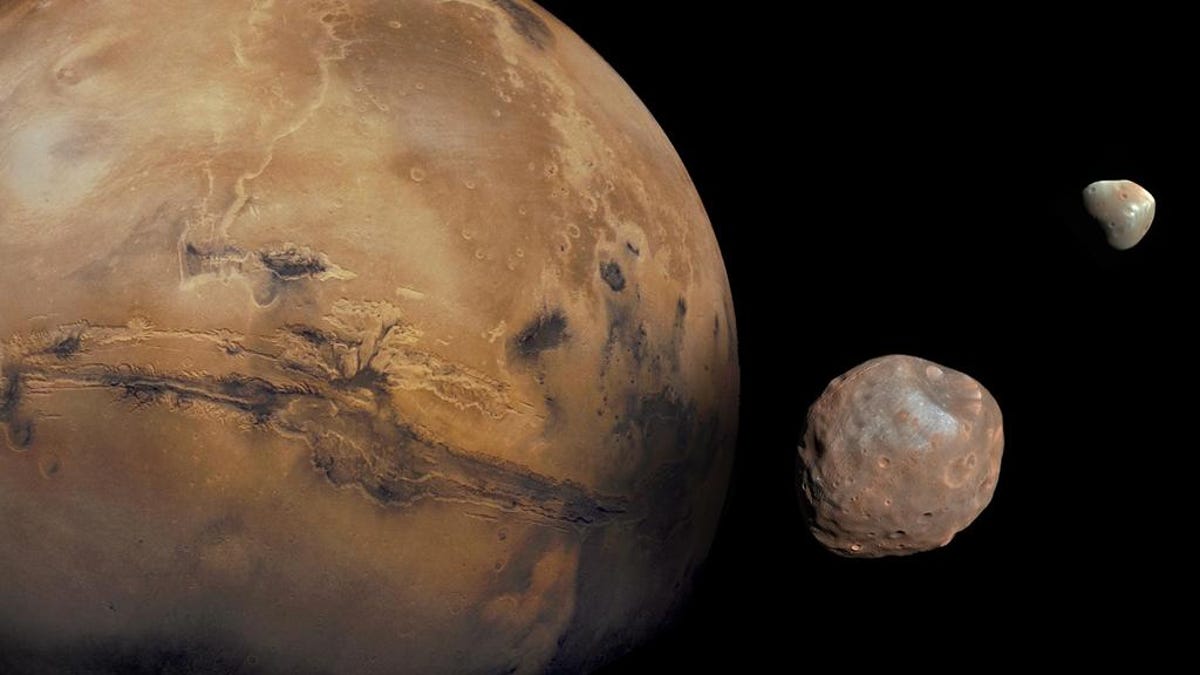NASA's Curiosity rover sees a solar eclipse on Mars... after sunset
It's not so unusual for one of the red planet's moons to pass in front of the sun, but catching it at dusk takes some effort.

Mars is kept company by two cratered moons -- an inner moon named Phobos and an outer moon named Deimos.
A key component of a solar eclipse is, well... the sun. But images from the Curiosity rover on Mars show delightfully nerdy evidence of Martian moon Phobos passing in front of our star after the sun had already called it a day (or rather, a sol) and dipped below the horizon.
A user on the unmannedspaceflight.com forums first flagged the images from Curiosity, and then NASA's Doug Ellison, who helps coordinate the rovers' photo-taking, took to Twitter to break down the unusual celestial sight.
If you take the 9 frames roughly in the middle and animate them - you get this.... the bit of each file name before EDR is the time in seconds - so these are about 8 seconds apart....80 or so seconds in this gif. pic.twitter.com/jh6d3L2yIH
— Doug Ellison (@doug_ellison) March 27, 2019
Actually spotting the over-the-horizon eclipse took some involved image analysis. Basically, the dusk light the sun projects upward after setting briefly dimmed over the course of a few minutes. Ellison shared the above GIF animation, which is essentially a time-lapse of the event. When sped up this way, the projected eclipse can clearly be seen.
Ellison also cross-referenced the photos with NASA's Horizons database tracking the orbits of thousands of solar system objects to verify it was in fact Phobos passing in front of the sun that caused the effect.
What's that? Phobos illumination goes to 0, and the Sun-Phobos-Observer angle peaks at 179+ degrees for two minutes. That's......AN ECLIPSE. The same UTC time as the middle of that block of images!!! pic.twitter.com/tD1Ep0xCwR
— Doug Ellison (@doug_ellison) March 27, 2019
"I think this might be the first time an eclipse has been observed on Mars in some way.....AFTER sunset," Ellison wrote.

